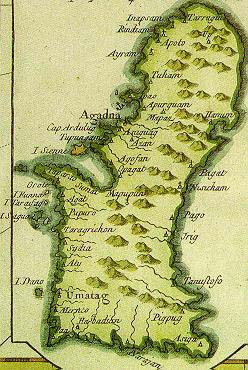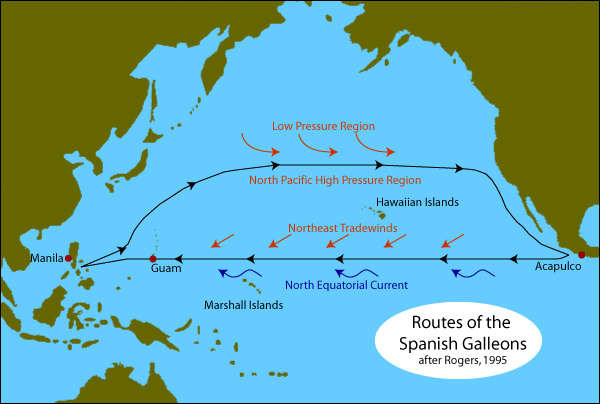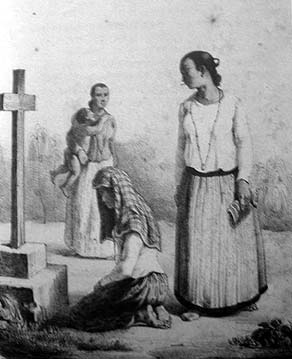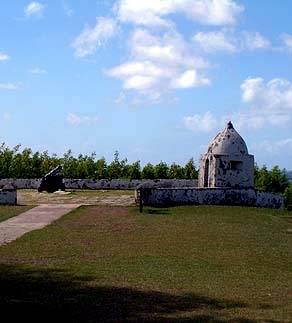 |
 |
 |
 |
||||
|
|
|
|
|
|
|
|
|
|
|
|||||||
|
|
|
|
Pavilion at the Plaza de España in Hagatña.
|
|
|
In the aftermath of the Spanish-Chamorro wars, geographic and cultural changes take place on Guam that set a new tone for the subsequent centuries. The vast majority of the colonial administration became concentrated in Hagåtña, or in Umatac. Anne explains: “San Vitores’ landing is really what makes Hagåtña central. Prior to that it had never been central to anything. It had not been a capital, It was just one of the villages. But the presence of San Vitores makes it a new capital, because that’s now where the Spanish seat of power is. That’s when Chief Quipuhá becomes a prominent figure in Guam history, and I think it’s just by chance. I mean San Vitores, he just happens to land in Hatgåtña. He could have landed anywhere, really. None of the accounts indicate that he was looking for a specific place."
|
||
|
|
||
|
“I think very early on, the cultural conflicts were pretty extreme,” Anne continues. “The Spanish, we know, had a different view of the world. This would probably be the equivalent of meeting people from outer space: two cultures that are from totally different worlds. So there are clashes immediately. They have immediate clashes over anything that the Spanish view as religion, so immediate clashes with the makåhna. "The Spanish viewed the work of the makåhna—dealing with spirits—as work of the devil. Even though the makahnas also worked with herbal medicines and all like that, to the Spanish that wasn’t the important part. The important part was that they were dealing with the spirits and particularly because they held skulls in their homes." "There are also conflicts about women. Spanish priests wrote that these women must be taught to change their ideas about freedom, their 'mistaken notions' of freedom. That’s a constant theme in their writing. This is because Chamorro women had power within the family, because they controlled the land. But also I think women had a lot of mobility.”
|
|
|
|
|
|
|
|
“But the Spanish never put the resources into Guam,” Anne says. “Not money, not personnel.” This was probably because, for Spanish galleons plying the route from Acapulco to Manila, Guam was a largely unnecessary stopover. Anne explains, “I think probably at the time in which navigation was really more life threatening, it probably was more important to have a stop over in the Marianas to get water or supplies. But then the routes were more stable, and there was no money to be made here. Spain viewed Guam as a charity. And as Spain’s economic condition went downhill, I’m sure their interest in a place that wasn’t giving them any profit also diminished."
|
||
|
|
||
|
Catholicism was a major and lasting impact of Spanish Colonization. "Right after the war in 1695, everyone had to become baptized," Anne points out. "In fact, one of the priest’s accounts mentioned that the priests were taking attendance at church and people who were absent, their names were reported to the military. "Christianity was strictly imposed: you had to be a Christian at least on the surface. It just wasn’t an option. And I would say probably until the 1960s, it wasn’t really considered an option. But during the Spanish occupation, being Spanish and being Catholic were the same thing, and so among the Chamorros being Catholic was just part of that, there was no other option."
|
|
|
|
"I think that between 1695 and 1950, there were as many changes as any other place in a 250-300 year period. For the most part daily life was farming and fishing, and family events revolved around the church. But the main church events were still the same events that had been significantly cultural anyway: Funerals and weddings especially, but funerals by far, that’s the biggest cultural event. Even though we had to become Catholic, it was still the biggest cultural event. "Any historian who wants to get into those centuries, there’s not a lot that has been written. The only documents I have seen, which is very few translations, basically say that from the Spanish perspective, there’s are no rebellions or events of interest. There are no ‘major events.’ So to me that really works to the Chamorro advantage, because then they just do their own thing, as long as they’re going to church."
|
|
|
|
|
Life in Inarajan and on Guam in general would take a more dramatic turn in the 20th century. Our guides recall some of these memories.
|
||
|
|
||
|
|
|
|
|
|

|
| Inarajan Home | Map Library | Site Map | Pacific Worlds Home |
|
|
|
|
|
|
|
|||
| Copyright 2003 Pacific Worlds & Associates • Usage Policy • Webmaster |
|||







